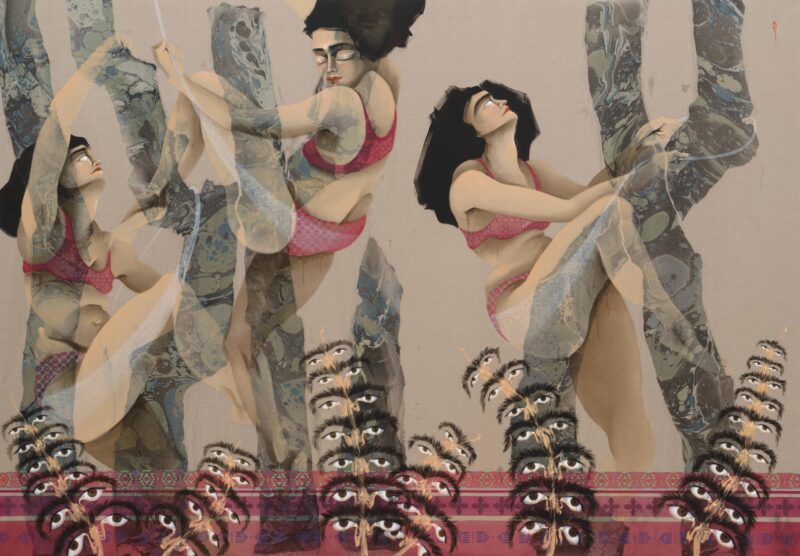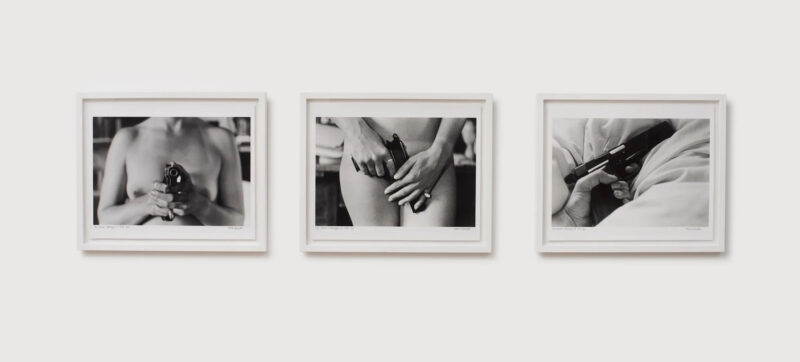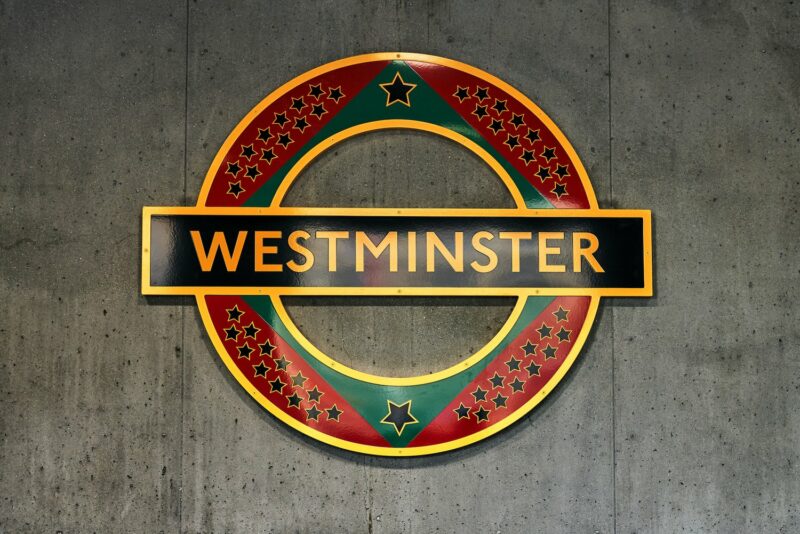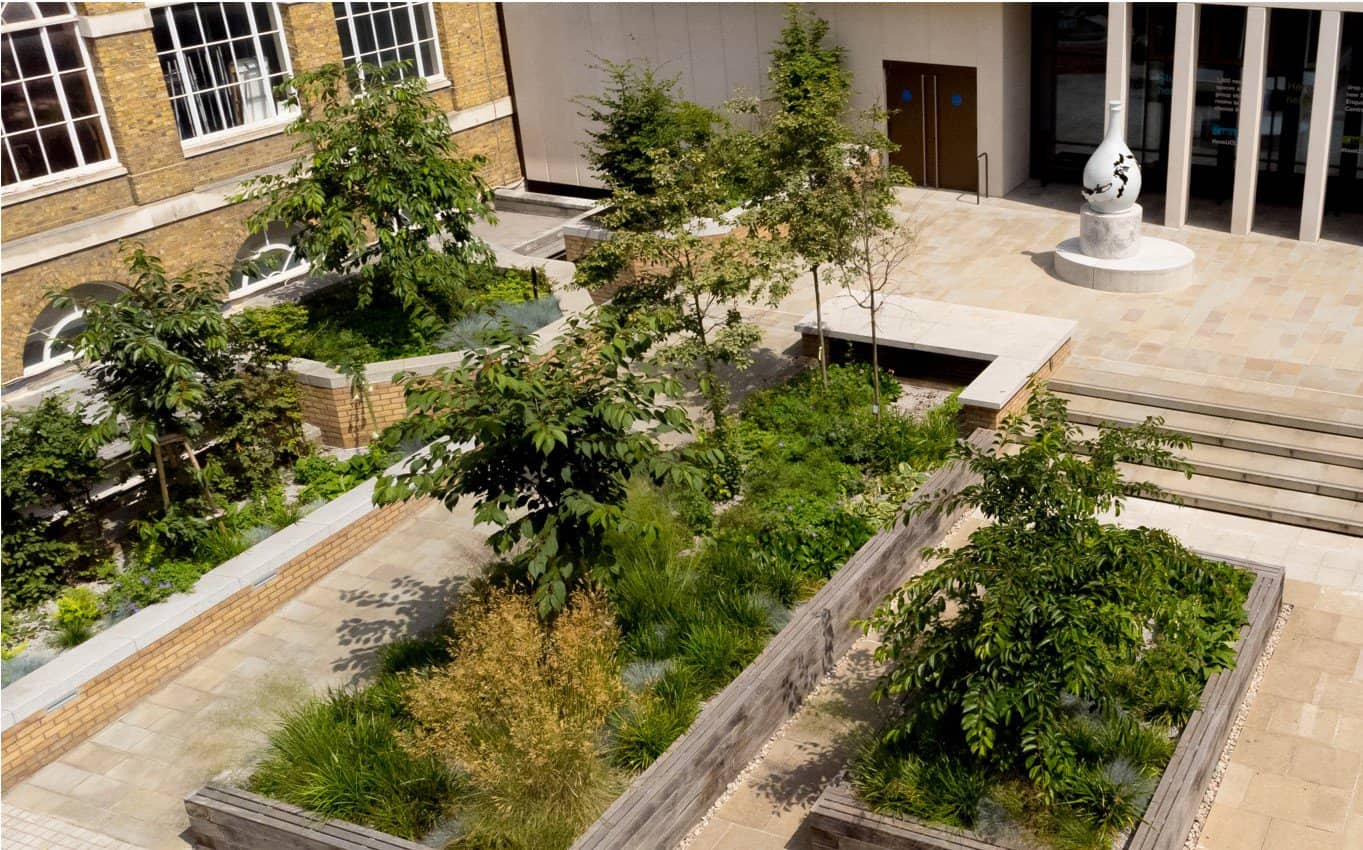
I hadn’t clocked University College London as much of an art destination until recently: sure, the campus between Euston and Warren Street boasts the agreeably off-beat Grant Museum of Zoology and Petrie Museum of Egyptian Archaeology, but art? In fact, there is also a UCL Art Museum (free, open Wed – Fri 1-5pm) with an eccentric collection centred on 19th century statues by John Flaxman and a print from everyone who has studied at the Slade. There’s an equally eccentric temporary display at the moment: for ‘Testing Ground’ the results made over the years by Slade students experimenting with techniques on test plates, the printer’s equivalent of people trying out pens in a stationery shop, have been printed for the first time – sort of accidental art. There’s also other work dotted around including a Rachel Whiteread in the new Student Centre…
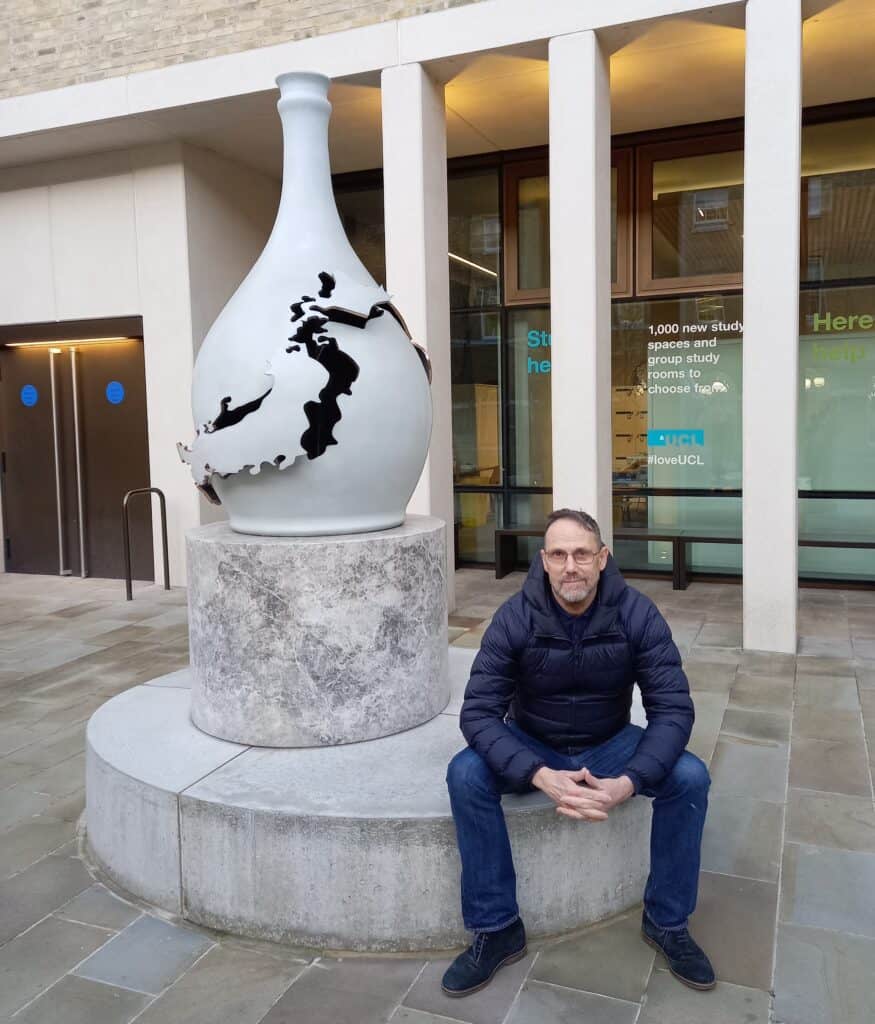
I discovered all that only because I was in the nearby ‘Japanese Garden’ for the launch of a new commission, the first of several in the pipeline. London-based Dutch artist Bouke de Vries’ first public art work does all the right things: repurposes his established language to striking effect, provides the potential for discussion, and comes with a plinth designed to double as the seat he’s sitting on in my photograph. De Vries trained in ceramic conservation and is best-known for his ‘exploded’ way of reclaiming broken pots after their accidental breakage. That’s particularly appropriate to a Japanese subject given the tradition of Kintsugi – the philosophically-informed Japanese method of embracing an object’s history by mending areas of breakage with prominent and valued materials, such as gold. ‘Fragments of Memory’ is a grey-patinated bronze in which the apparent breakage of a soy bottle (once used for import) takes the form of a displaced map of Japan, putting earthquakes, climate change, personal trauma and Covid into the mix of potential meanings. The public are welcome in the garden, which has only recently acquired several thematic cherry trees – it got the name purely from a memorial to the ‘Ch?sh? Five’. They arrived to study at UCL in 1863, when Japan was an isolated state that banned foreign travel, and returned to play key roles in its transformation to an open and increasingly modern society.
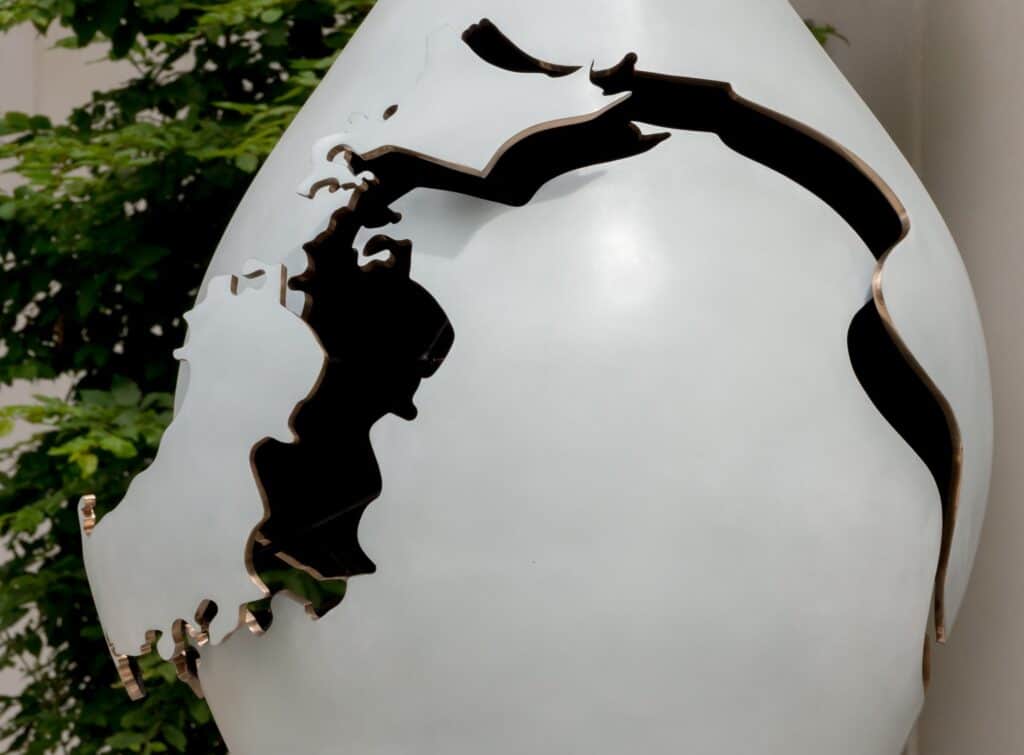
Art writer and curator Paul Carey-Kent sees a lot of shows: we asked him to jot down whatever came into his head


